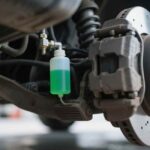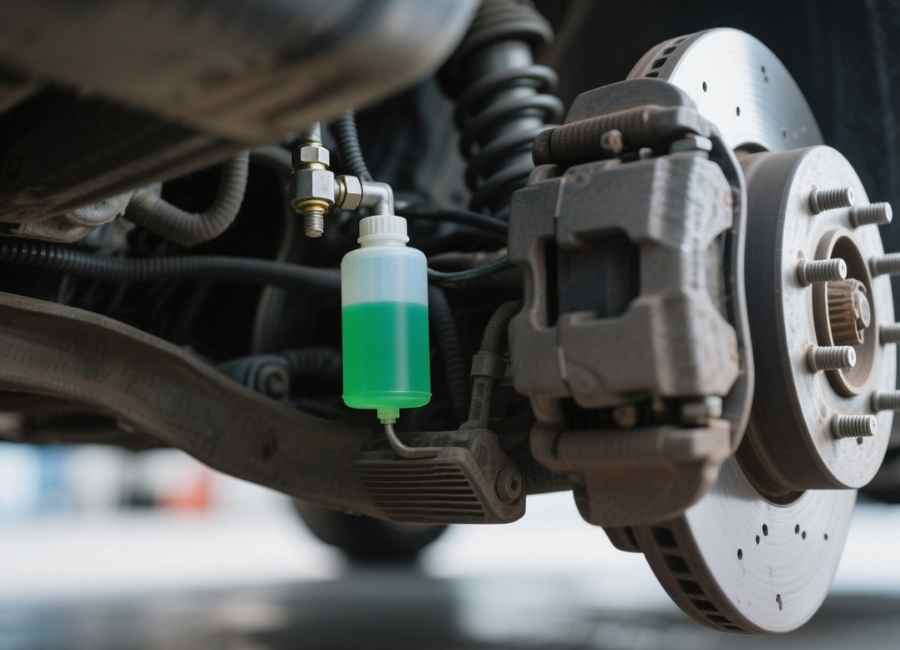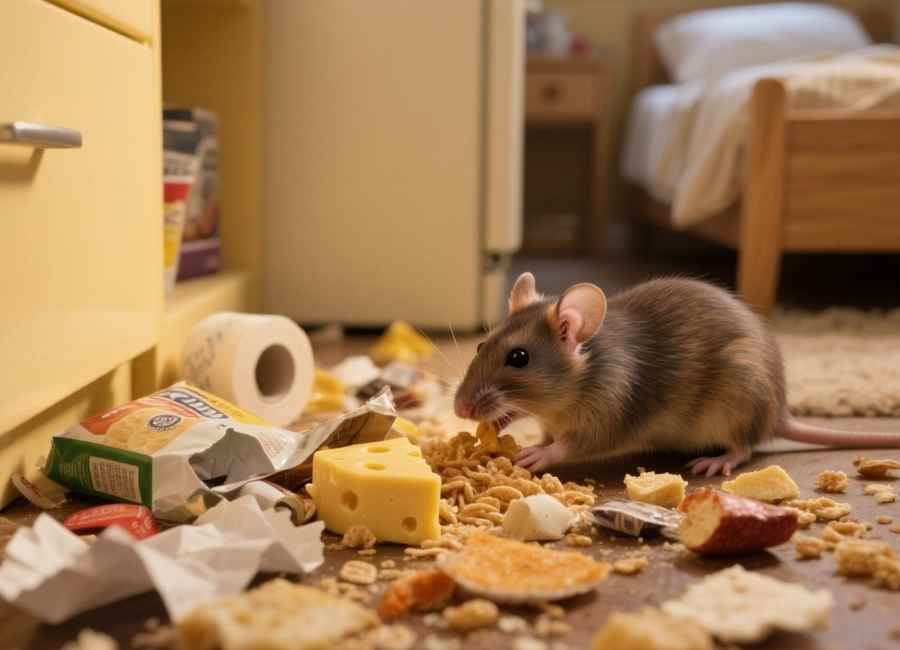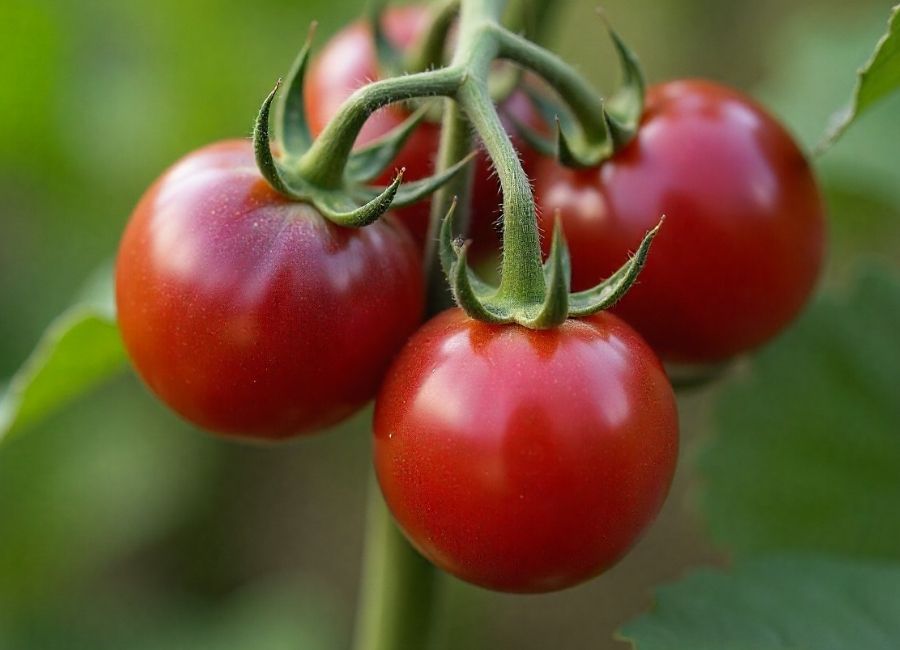When you press the brake pedal, your car slows down as expected. While this may seem simple, it actually initiates a complex hydraulic process. Brake fluid is at the centre of this system and is often overlooked until something goes wrong.
Brake fluid, like other fluids in your car, needs regular checks to keep your brakes working well. Sometimes you need to add more, but other times you should replace it entirely if it’s old or dirty. Knowing what brake fluid looks like, what it does, and when to change it is essential for every car owner. This guide explains the different colours of brake fluid, what they mean, and how to take care of this vital part of your car.
What is Brake Fluid?
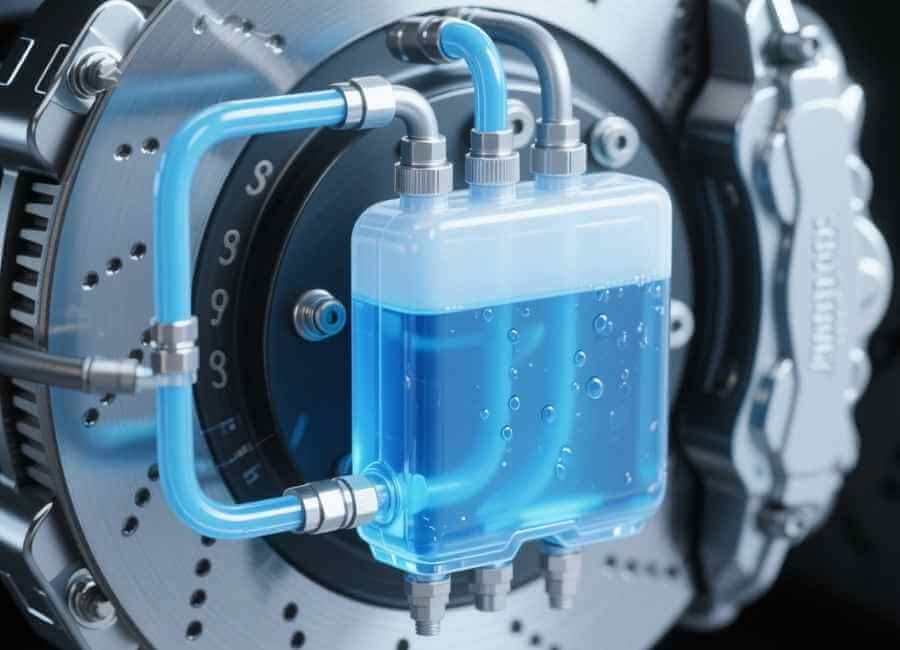
Brake fluid is a special liquid that carries the force from your foot on the brake pedal to the brakes. When you press the pedal, the fluid moves through the brake lines and builds pressure. This pressure pushes pistons in the brake callipers or wheel cylinders, which then press the brake pads or shoes against the rotors or drums. The resulting friction stops your car.
Beyond this primary function, brake fluid also plays a vital role in protecting your braking system. It lubricates moving parts and prevents corrosion from the inside out. Brake fluid is hygroscopic, meaning it absorbs and traps moisture that can enter the system. This prevents water molecules from causing rust and corrosion in critical components like brake lines and callipers, which could otherwise lead to unexpected brake failure. (Brake Fluid: Function, Changing and Differences, 2025)
What Does Brake Fluid Look Like?
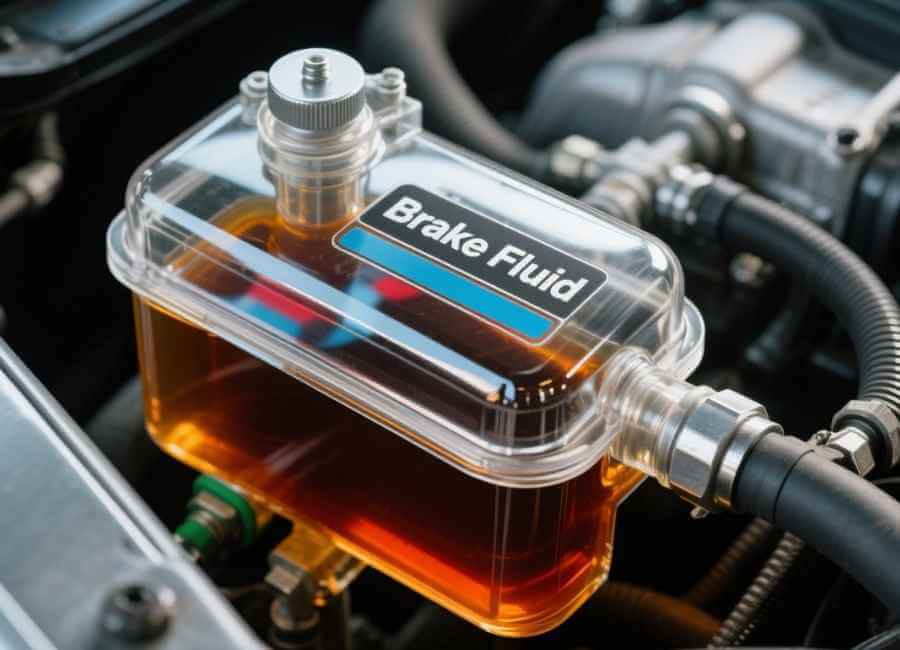
When new and clean, brake fluid is typically a transparent, slightly tinted liquid. Depending on the type, it can be nearly transparent or have a light amber, bluish, red, or green hue (Halderman, 2020). (What Colour Is Brake Fluid?, 2025) You can easily see its colour and level in the transparent reservoir located in your engine bay.
Over time, the colour of brake fluid can change. If it turns brown or black, the fluid is old and dirty, and it should be replaced. Darker fluid shows it has picked up moisture, dirt, or small bits from inside the system. (Brake Fluid Colour Chart | Good & Bad Colours Indicators: Essential Guide, 2025)
The Different Types of Brake Fluid
There are different types of brake fluid, each with its own formula and look. It’s essential to use the correct type of fluid for your car, as mixing the wrong fluid can harm your brake system.
DOT 3
DOT 3 is a glycol-based fluid with a lower boiling point. It wears out faster, so you usually need to change it about every 20,000 miles. (How Often Should Brake Fluid Be Changed?, 2025) Fresh DOT 3 fluid can look slightly yellow, blue, red, or green. (Brake Fluid: What It Is & Why It Matters, 2025)
DOT 4
DOT 4 is also glycol-based but has a higher boiling point than DOT 3, so it lasts longer—up to 60,000 miles. (DOT 3 vs. DOT 4 Brake Fluid: What’s the Difference?, n.d.) It is usually clear but can also look yellow or deep red. (Brake Fluid DOT 4, 2021)
DOT 5
DOT 5 is a silicone-based fluid and is not compatible with glycol-based systems. It’s primarily used in classic cars, military vehicles, and other niche applications. It is easily identifiable by its distinct purple colour. (Brake Fluid FAQs, 2023)
DOT 5.1
DOT 5.1 is another glycol-based fluid, but it has a much higher boiling point, about 500°F. One significant benefit is that it works with both DOT 3 and DOT 4 fluids. It can look yellow, blue, or completely clear. (BRAKE FLUID DOT 5.1, n.d.)
How to Check Your Brake Fluid
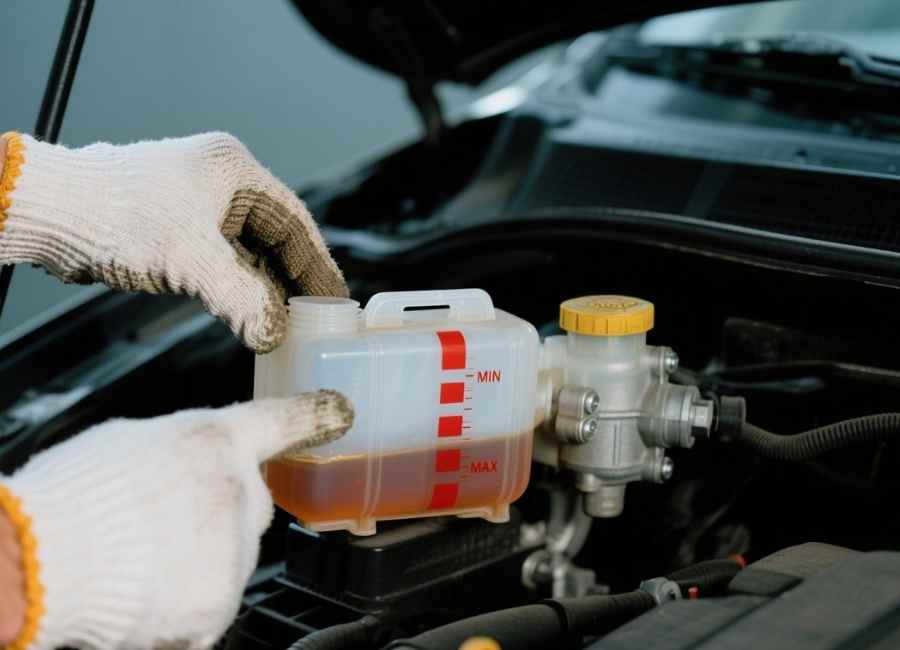
Checking your brake fluid is easy and only takes a few minutes at home.
- Locate the Reservoir: Open your car’s hood and find the brake fluid reservoir. It’s a small, transparent plastic container, usually mounted on the master cylinder near the back of the engine bay on the driver’s side.
- Check the Level: The reservoir has “MIN” and “MAX” lines on the side. The fluid should be between these marks. If it’s below “MIN,” add more of the correct brake fluid for your car.
- Check the Colour and Condition: Look at the fluid’s colour. If it’s darker than honey-brown, it’s probably dirty and should be replaced soon. You can also touch a drop between your fingers. If it feels gritty, it has debris and should be changed right away to protect your brakes.
Keep Your Brakes in Top Shape
Understanding the colour and condition of your brake fluid is a simple yet effective way to stay on top of your vehicle’s maintenance. Regularly checking the fluid level and changing it when it becomes dark or contaminated will ensure your brakes perform reliably and safely. A small bottle of brake fluid is inexpensive, and a professional fluid flush is a worthwhile investment in your safety, typically costing around $100.
Whether you add brake fluid yourself or have a professional handle it, keeping an eye on this critical fluid will help you drive with peace of mind.
Frequently Asked Questions
What colour is brake fluid when it needs to be changed?
Brake fluid that needs to be changed usually turns dark brown or black. This means it has absorbed moisture and dirt, making it less effective.
How can I tell if my brake fluid is contaminated or harmful?
You can check if your brake fluid is contaminated by examining its colour and texture. If it’s dark brown or black, or feels gritty, it’s time to change it. A soft or spongy brake pedal can also indicate that the fluid is old or contaminated.
Does brake fluid look like water?
New brake fluid is clear and can look like water, but it often has a slight yellow, amber, or blue tint. It also feels oily, unlike water.
Is brake fluid supposed to be brown?
New brake fluid is not brown. If your brake fluid is brown, it’s a sign that it is getting old and has started to break down or become contaminated. It should be monitored closely and changed soon.
Why is my brake fluid dark?
Brake fluid gets darker as it absorbs moisture from the air and picks up tiny particles from worn parts like seals and hoses. This makes the fluid less effective and can cause rust.

